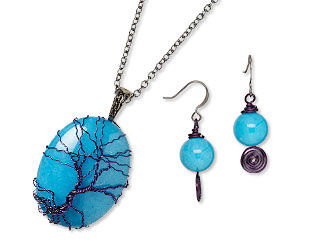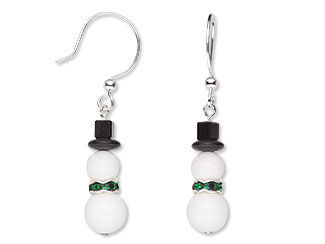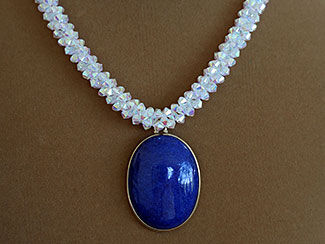Jade, Mountain Meaning and Properties
Mountain "Jade" History
Mountain "jade" is a term used to describe a type of dyed or color-enhanced high-grade dolomite marble from Asia. Dolomite, also known as "dolostone," is marble with magnesium in it. The mineral was first described by, and then named after, the French mineralogist and geologist Deodat de Dolomieu (1750–1801).
The term "marble" originated from stone masons when a limestone, which is calcium carbonate, is polished up to a shine. Marble is a metamorphosed limestone, created deep within the earth millions of years ago, composed primarily of the mineral calcite and usually contains other minerals, such as clay minerals, micas, quartz, pyrite, iron oxides and graphite. Each piece of marble is like a snowflake: no two pieces are ever exactly the same.
Over the ages, mineral remains of the shells and skeletons of millions of tiny sea animals were metamorphosed into this strong, beautiful marble used for centuries by sculptors. Mountain "jade" beads are marble that is dyed vivid, gleaming colors.
What are the Metaphysical Properties of Mountain "Jade"?
Marble is said to help to create balance in our lives. The darker shades help those with excessively high male energy by softening that male energy when it becomes destructive. The lighter shades aid those whose female energy is working overtime and making them feel overly sensitive. Wear marble whenever your life seems out of balance—like when you're starting a new job, or a new relationship, or moving to a new town or city--all activities that require some tightrope walking to get from one "place" to another.
Marble is also thought to help recall dreams and bring serenity, mastery and actualization of one's thoughts. It is also used to help in accessing unused portions of the human brain. Mountain “jade” meaning is linked to all of meanings of marble in general.
What is Mountain "Jade" Made From?
Mountain "jade," a fairly soft stone, is a dyed or color-enhanced high-grade dolomite marble from Asia. Marble is a metamorphic rock composed of recrystallized carbonate minerals, most commonly calcite or dolomite. Metamorphism causes variable recrystallization of the original carbonate mineral grains. The resulting marble rock is typically composed of an interlocking mosaic of carbonate crystals.
- Mineral Information: Dolomite Marble
- Chemical Composition: CaMg(CO3)2
- Color: White
- Hardness: 3-1/2 to 4-1/2 (Mohs)
- Specific Gravity: 2.85 – 2.95
- Refractive Index: 1.578
How Do You Clean Mountain "Jade"?
Use water and a soft cloth to safely clean mountain “jade.” Storing in a drawstring bag is a quick-and-easy way to protect the stone from scratches. It is not recommended to use ultrasonic and steam cleaning on mountain "jade."
Mountain “Jade” FAQ
Q: Is mountain “jade” a type of real jade?
A: Mountain “jade” is actually dolomite marble, not genuine jade.
Q: Is mountain “jade” natural or dyed?
A: Mountain “jade” is available in both natural white and grey hues or dyed in bright colors.
Q: Is mountain “jade” considered a natural gemstone or a man-made stone?
A: Mountain “jade” is a natural gemstone.
Q: Are there different grades or qualities of mountain “jade”?
A: Like any gemstone, mountain “jade” is assigned a grade based on the features and condition of each individual stone.
Designing with Mountain "Jade"
Mountain "jade" is a perfect choice for fine costume jewelry designs. This stone can add accents of bright, vivid colors that resemble top-quality gemstones. Available in many different colors, mountain "jade" cabochons and beads can be used as pendants and strung for beautiful necklaces. Mountain "jade" is economical and versatile for a multitude of looks.
A Few Design Inspirations to Get You Started
**Please note that all metaphysical or healing properties listed are collected from various sources. This information is offered as a service and not meant to treat medical conditions. Fire Mountain Gems and Beads® does not guarantee the validity of any of these statements.
How did you like this resource? Your feedback helps us provide resources that matter to you most.
Copyright Permissions
All works of authorship (articles, videos, tutorials and other creative works) are from the Fire Mountain Gems and Beads® Collection, and permission to copy is granted for non-commercial educational purposes only. All other reproduction requires written permission. For more information, please email copyrightpermission@firemtn.com.



